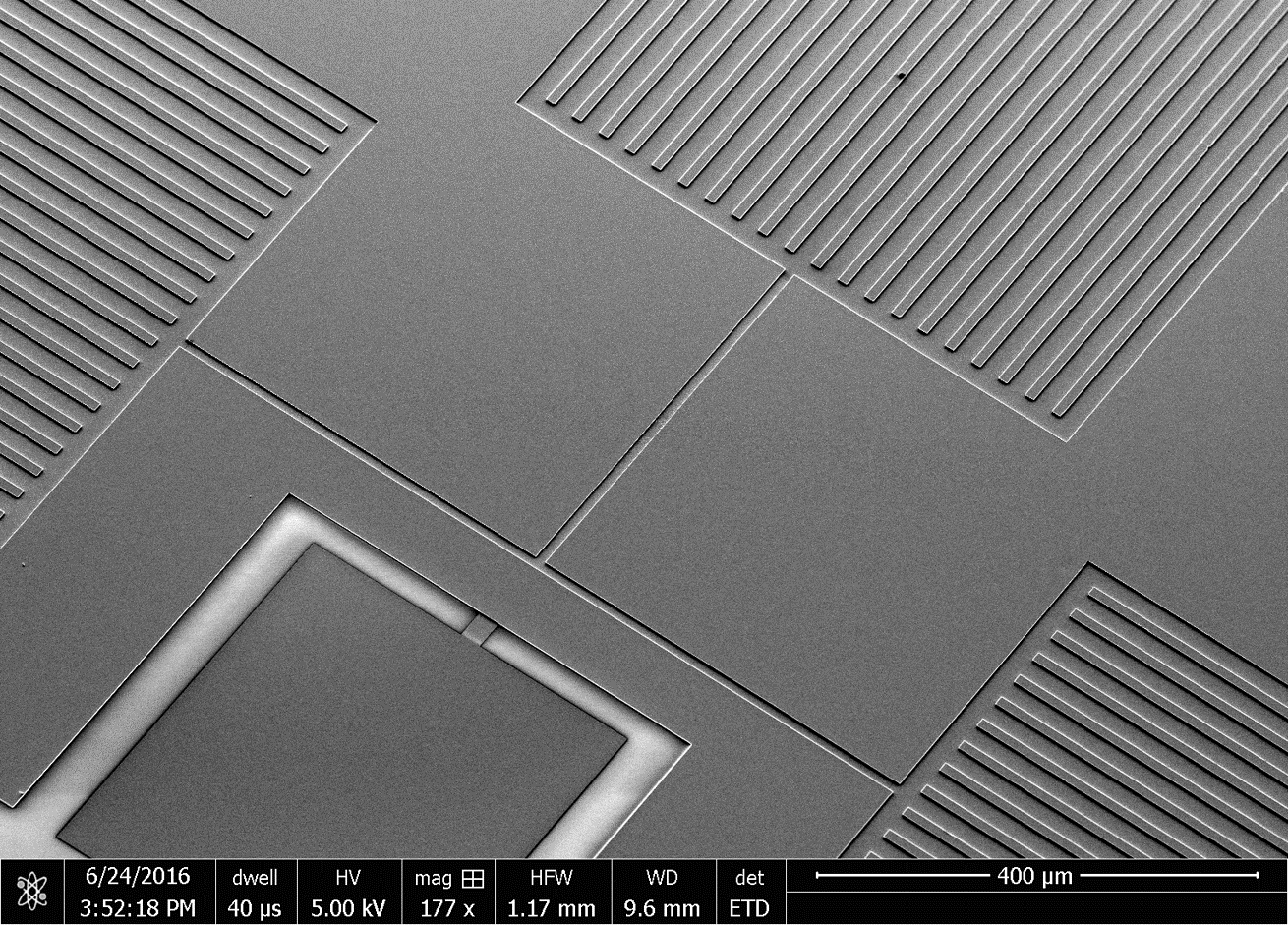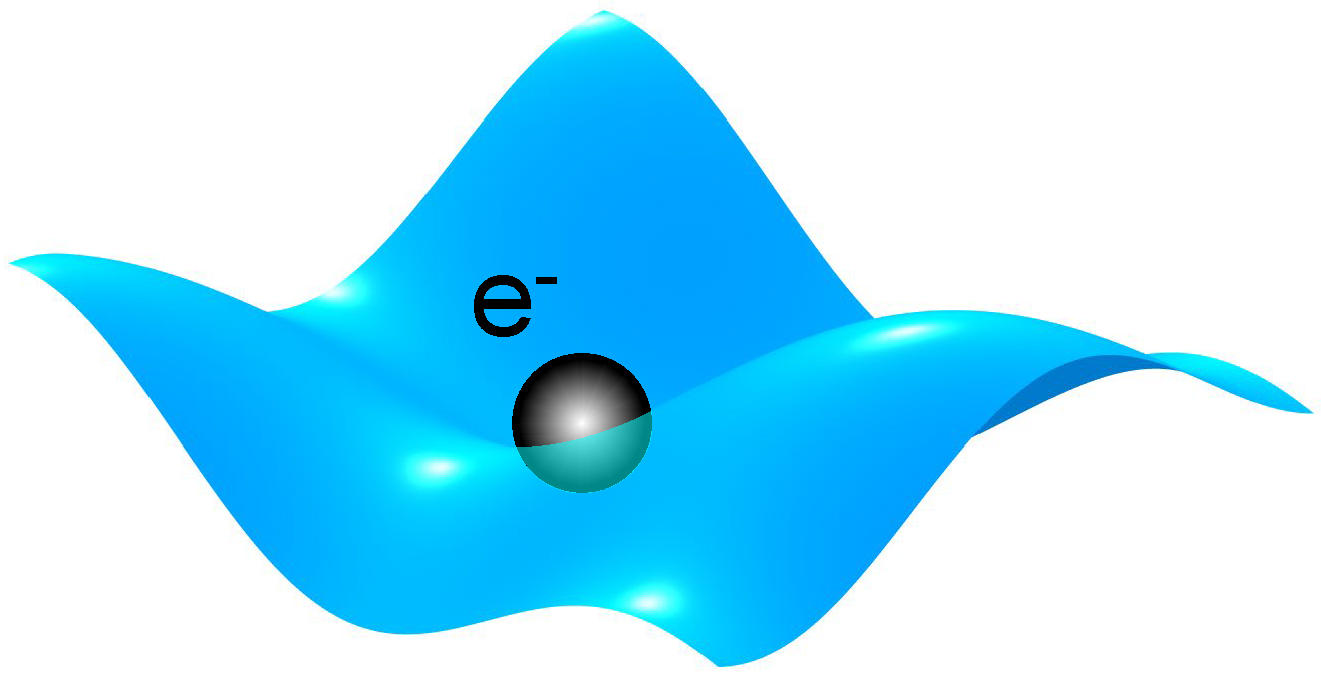Electrons Confined in Microchannel Devices
 Besides having the largest mobility known in any electron systems, electrons on helium exhibit other superior propeties compared to 2DEGs in semiconductors. Due to unscreened Coloumb interaction, electrons crystallize into a Wigner Solid (WS) phase at moderate electron densities and temperatures around 1 K, while WS phonons can strongly couple to the ripplons on the surface of liquid. We study transport propeties of this strongly-correlated coupled system confined in our fabricated micro-channel devices to find new interesting phenomena, in particular related to polaronic effects and nanofriction.
Besides having the largest mobility known in any electron systems, electrons on helium exhibit other superior propeties compared to 2DEGs in semiconductors. Due to unscreened Coloumb interaction, electrons crystallize into a Wigner Solid (WS) phase at moderate electron densities and temperatures around 1 K, while WS phonons can strongly couple to the ripplons on the surface of liquid. We study transport propeties of this strongly-correlated coupled system confined in our fabricated micro-channel devices to find new interesting phenomena, in particular related to polaronic effects and nanofriction.
Transport of Wigner Solid in Microchannels
Transport of electrons confined in microchannels, where the size of the electron system can by varied by applied electrostatic potentials, reaveals a very rich phase diagram. It was possible to observe fascinating phenomena such as crystallization to the WS phase, renentrant melting, Bragg-Cherenkov scattering of the WS and sliding of the WS from surface deformations, etc.

We are interested in studying transport of electron WS confined in microchannels to reveal new interesting phenomena which originate from the interlay between the linear size of the WS and its coupling to the surface of liquid helium substrate.
O. Badrutdinov, A. V. Smorodin, D. G. Rees, J.-Y. Lin, and D. Konstantinov
Phys. Rev. B 94, 195311 (2016)
J.-Y. Lin, A. V. Smorodin, A. O. Badrutdinov, and D. Konstantinov
Phys. Rev. B 98, 085412 (2018)
Novel Polaronic Effects
It is the conventional wisdom that electrons whose motion along the surface of liquid is overdamped, must obay the Ohm's low. However, when moving WS is strongly coupled to the surface ripplons, the transport of the ripplopolaronic lattice can show very unusual behaviour.

In particular, in our experiment we showed that when the ripplopolaronic lattice comprising of electrons and ripplons is driven through a T-shaped micrchannel junction (see picture at the top of the page), all charge carriers go straight through the junction, despite the Ohm's low predicts that half of them must go into the side channel. This indicates that the charge carriers in our system can be carrierd by the surface wave (ripplons), which is reminicent to transport of 2DEG in semiconductors by the surface acoustic waves (SAW). This might find some interesting potential applications.
A. O. Badrutdinov, D. G. Rees, J.-Y. Lin, A. A. Smorodin, D. Konstantion
Phys. Rev. Lett. 124, 126803 (2020)
Classical Simulator of the Frenkel-Kontorova Model
Frenkel-Kontorova (FK) model describes a driven 1D chain of particles coupled by a nearest neighbor interaction and subject to an external spatially periodic potential. The competition between these two potentials predicts interesting behavior, such as the stick-slip motion of the chain. Thus, the FK model is relevant to the study of the sliding friction.

In our experiments, we exploit Coulomb interaction between electrons and impose periodic potential on electrons by confining them in a our designed microfabricated device (see picture). Our goal is to use our system as a classical simulator of the FK model and study predictions of the model by means of the transport measurements.
J.-Y. Lin, A. V. Smorodin, A. O. Badrutdinov, and D. Konstantinov
J. Low Temp. Phys. 195, 327 (2018)
W. Quapp, J. Y. Lin, and J. M. Bofill



